Sous Vide Cooking Technique
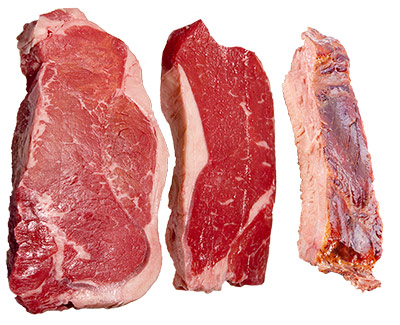
Sous Vide means 'in vacuum' in French. As the name suggests, it involves cooking foods at lower temperatures for longer time so as to retain the moist juices and yet cook the meat to perfection. Sous vide style of cooking allows you great levels of control over the temperature.
Typically, for the sous vide cooking technique, you need a temperature-controlled water bath and vacuum-sealed plastic bags. This cooking technique works very well with different types of meat and seafood. What started in the mid-1970s at a Michelin Three-Star restaurant to cook delicate foie gras to perfection, the sous vide cooking technique has now even gained some degree of popularity with home cooks.
Cooking of meat releases the characteristic flavor - whether you grill or fry or bake. Every method of cooking results in a browning reaction called as Maillard reaction. When the proteins in the meat combine in certain way with the simple sugars, the outer layer turns brown which vary based on the temperature, moisture present in the meat, technique of cooking and the time. We can always tell what is cooking by the aroma released by the meat or sea food. The Maillard reaction, or its absence, helps us to distinguish the flavor of boiled/steamed meat from grilled or fried meat. Direct dry heat can quickly induce the Maillard reaction which on the other hand will be impeded when the meat is immersed in water. That is why it is better to sear the steak before vacuum sealing them for cooking sous vide. But this technique may not be advisable for lambs for which it would be preferable to sear after cooking sous vide.
Named after the French physician and Chemist - Louis Camille Maillard, the brown reaction typically occurs in a narrow temperature range of 280 - 350 degree F. If the temperature is very high it results in pyrolysis - burning of the food. Pyrolysis often produces chemical changes in the surface of the meat which may turn carcinogenic. Now you know why Cooking is called as Science as well as an Art.
It is not just the proteins in the meat that imparts the unique flavor and aroma. The fat in the beef imparts the marbled appearance that gives the best flavor when cooked. In Fish, the fat is not compartmentalized like in beef but distributed across the whole of fish. This fat coupled with the light structure of protein in fish gives the unique strong flavor you would expect from fish.
Getting started on Sous Vide cooking technique
Get yourself a good temperature controlled water bath. Alternatively you can use an immersion circulator to heat and circulate water in a pot at desired temperature.
The plastic bag keeps your meat with its juices trapped within and allows for efficient transfer of heat from the water to the food within. While you can go in for good quality zip-lock bags, it would be ideal for bags to be vacuum sealed after the meat is placed inside.
In fact keeping food away from air has always been the traditional method to arrest its decay. Sealing the meat within the bag also keeps it from drying out. Instead you get tender meat pieces that are moist with their own juices. The humid environment within the bag ensures that the meat is well braised and juicy. Maintaining the temperature allows the meat to be evenly cooked. You can do away with the rare centers and dry edges! You can get evenly-cooked meat and fish. As for the nutritive value, the carotenoids and flavonoids are retained and the delicate fats remain un-oxidized.
Using plastic bags at high temperatures is a cause for concern. Be sure to use food grade plastic bags that are certified for cooking and safe to use. Eschew cheaper plastic bags and pouches that can leach BPA and toxic metals into the food.
- Use different cutting boards for different types of food.
- Follow the temperature and time required for different meats to avoid contamination. Ensure that the internal temperature is high enough to cook the meat thoroughly and avoid the risk of botulism.
- With sous vide cooking technique, you can hold the meats at safe temperature for longer periods without affecting its quality. The process is such that it allows you to repeat the process if you find that it is undercooked. The remarkable advantage of cooking sous vide is that once you get the time and temperature right, you can be sure of perfectly cooked food each time. You retain the natural juices and nutrients. You can have fresh green broccoli with its vitamins and trace elements intact.
- Cooking times can vary from 15-20 minutes to few hours. This depends on the the cuts and types of meat. Tougher meats such as game, ribs, octopus and grass-fed meats will benefit from slow cooking. Chicken breasts and tender steaks can be done in lesser time. Tender fillets of fish, foie gras, pork tenderloin and shellfish can be cooked for lesser time too. You can continue to leave them for a short while in the water bath and they still retain the texture and moist nature.
When you cook meat in sous vide technique, the Maillard Reaction does not happen – so you do not get the attractive browning on the outside of the meat. This can be fixed by a blast of high heat once its ready to be served.
Sous vide cooking tips
Most often sous vide cooking is done at low temperature for longer time. This may need some changes in the way the meats are marinated and the amount and type of seasonings used. Roasted or powdered garlic works better than raw garlic pods. You can use marinades on the meat during the sous vide cooking process. But you must be sure that the marinade is not very acidic or alcoholic.
Such marinades will not reduce during cooking as it is in a vacuum. Since the role of acidic marinades is to tenderize meat, they are not required in sous vide cooking. But flavorful marinades can be frozen and then rubbed on the meat before it is placed inside the vacuum bag. Herbs, spices, lemon wedges etc can be used in the plastic bags to infuse flavor. Dried herbs are better for sous vide cooking. Whole spices might be too overpowering. Do not salt the meat before the sous vide process as it might lead to a pickled flavor and texture.
Top of the Page: Sous Vide Cooking Technique
Tags:#sous vide #sous vide cooking
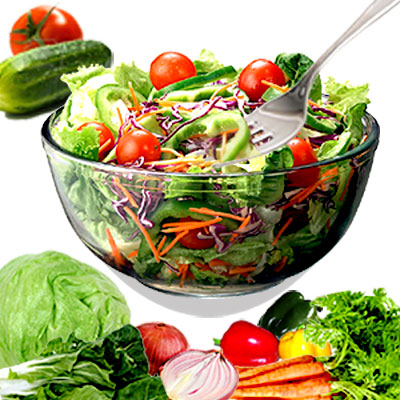 Food and Nutrition Facts
Food and Nutrition Facts Chamomile
Parsnip Soup
Dim Sum
Gazpacho Soup
Whole Grain Cereal
Jicama Nutrition
Bok Choy Stir Fry
Chia Seeds Benefits
Teff Nutrition
Kaniwa
Flax Seed
Wheatgrass Benefits
Kelp Benefits
Types of Chili Peppers
Medicinal Benefits of Pomegranate
Arugula Leaves
Maca Root
Pitaya Fruit
Benefits of Celery
Leek
Asparagus Benefits
Oyster Stew
Oyster Mushroom
Lupin Beans
Quinoa
Freekeh
Extra Virgin Olive Oil
Dill Pickle
Sauerkraut
Fat Burning Foods
Nutrition Chart
Food Combining
Calorie Counter
calories ...
Non Alcoholic Beverage
Punch Recipes
Food Label Nutrition
Homemade Sausages
Cooking Steak
Eating on a Budget
Budget Friendly Recipes
Quick Recipes
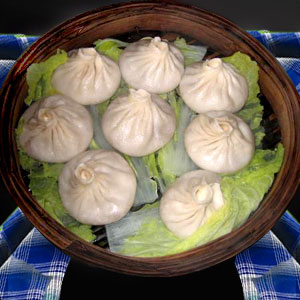 Healthy Packed Lunch
Healthy Packed Lunch Overnight Oats Recipes
Eggplant Casserole
Brunch Recipes
Burrito Recipes
Muffin Recipes
Cupcake Frosting
Apple Crisp
Stir Fry Cooking
Seafood Salad Recipe
Cooking Corn on the Cob
Finger Food Recipe
Sandwich Recipe
Bread Stuffing Recipes
Easy Chili Recipes
Picnic Recipes
Edible Mushroom Recipes
Mushroom Soup Recipes
Dip Recipe
Tapas Recipe
Corned Beef Recipe
Canned Salmon Recipe
Tilapia Recipes
Crumb Cake
Flourless Chocolate Cake
Regional Food
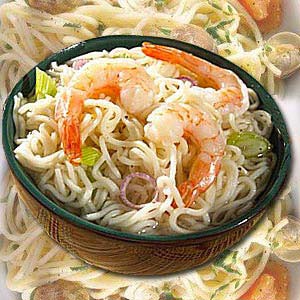 Lasagna Recipe
Lasagna Recipe Peruvian Ceviche
Chinese Food Recipe
Vietnamese Food Recipe
Malaysian Food
Korean Food Recipe
Indian Curry Recipe
Edible Rice Paper
Mexican Food Recipe
Quesadilla
Guacamole Dip
Italian Food Recipe
Spanish Food Recipe
Kosher Food
Falafel Recipe
Tandoori Chicken
Noodles
Canape
Couscous
Meatloaf
Chowder
Gumbo Recipe
Crockpot Recipes
Moroccan Food
Healthy Food
Pre Workout Snack
Matcha Tea
Simple food Swaps to Lose Weight
Foods to Beat Stress
Foods to beat Insomnia
Bone Density Foods
Prebiotic Foods
Kefir Grains
Agave Nectar
Spicy Trail Mix
Pesto Sauce
Homemade Hummus
Crab Cake Sauce
Bamboo Shoots Nutrition
Lemon Grass Plant
Butter Beans Recipes
Loose Green Tea
Seaweed Nutrition
Healthy Food
Low Fat Granola Bar
Steel Cut Oatmeal
Fruit Pizza
Pizza Toppings
Green Smoothie
Healthy Meal Planning
Delicious Mealtime Recipes
Heart Healthy Fats
Healthy Heart Recipe
Healthy Dinner Recipe
Healthy Dessert Recipe
Healthy Fast Food
Healthy Kid Recipe
Probiotic Food
Diabetic Friendly Foods
Fruit Salad Recipe
Bread Pudding
Tofu Recipe
Oat Bran
Broccoli Salad
Avocado Recipe
Iron Rich Food
Brain Foods
Antioxidant Food
Natural Diuretic
Low Fat Cooking Tips
Rice Pilaf Recipe
Low fat Chicken Recipe
Food Tips
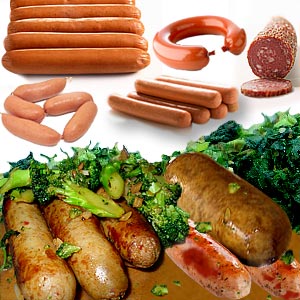
Sous Vide Cooking Technique
Natural Sugar Substitute
Stevia Sugar Substitute
Sunflower Seeds Nutrition
Bouquet Garni
Cake Decorating Tips
High Satiety Foods
Thanksgiving Dinner
Safe Food Storage
Frozen Food Storage Tips
Cold Storage Food Tips
Leftover Recipe
Food Pyramid
Dairy Free Food
Microwave Cooking
Food Intolerance
Homemade Ice Cream
Apple Cider Vinegar
Benefits of Honey
Beverage Cooler
Food Poisoning Symptom
Food Allergy Symptom
Food Addiction
Top of the Page: Sous Vide Cooking Technique
Popularity Index: 101,067

